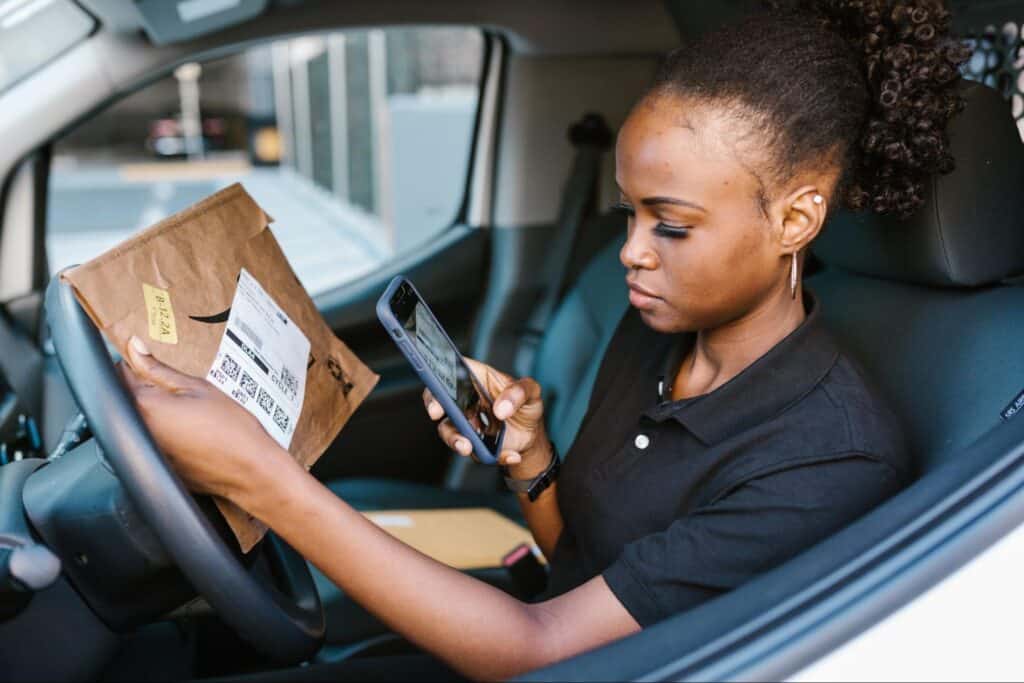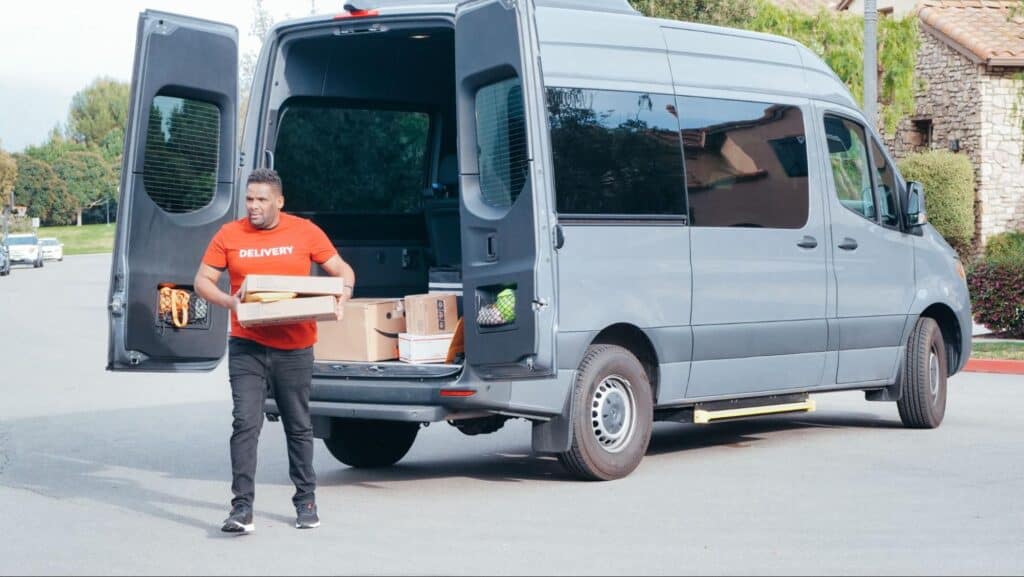
What is Last Mile Logistics?

Wise Systems
What is Last Mile Logistics?

Wise Systems

Supply chain management and logistics is a massive industry, more important than ever before as the world’s economy becomes more interconnected around e-commerce. The industry is responsible for coordinating manufacturers, transporters, warehouses, and retailers to manage the flow of goods so that consumers can purchase goods from around the world.
Last-mile logistics, also known as final-mile logistics, is one of the most crucial processes in the supply chain. It’s the planning and management of the last-mile delivery process — the final stage in a product’s journey from the warehouse or distribution center to the customer’s doorstep. In this article, we’ll review last-mile logistics, the most prominent challenges and solutions in last-mile logistics, current trends, and more.
In this article:
- What is Last-Mile Logistics?
- Challenges and Solutions in Last-Mile Logistics
- The Importance of Customer Experience in Last-Mile Logistics
- Essential Last-Mile Logistics KPIs
- What’s Trending in Last-Mile Logistics?
- How Route Optimization Can Transform Last-Mile Logistics
- Frequently Asked Questions
What is Last-Mile Logistics?

Photo by RDNE Stock project via Pexels
Last-mile logistics, also known as final-mile logistics, refers to the process of managing and optimizing last-mile delivery: the final leg in a product’s transportation journey before landing on the customer’s doorstep. Goods are moved from a regional or local warehouse, loaded into the back of a delivery van, and scheduled for final delivery.
While it seems simple, there are many things to consider, from choosing the right shipping providers to optimizing routes, ensuring on-time deliveries, reducing last-mile delivery costs, and more. In fact, final-mile logistics is actually the most complex and troublesome segment of the supply chain.
Challenges and Solutions in Last-Mile Logistics
Dollars and Cents
Last-mile logistics can account for up to 53% of a shipment’s total cost. When considering the many steps involved in getting a package into the customer’s hands, this is a massive portion of the overall expenditure.
Once an order is placed, a long process begins, starting with order processing and then going through inventory check, picking and packing, initial dispatch from the holding warehouse, arrival and storage within a local distribution center before finally reaching the dispatch for delivery.
The last-mile delivery process is expensive due to fleet management, gas, labor costs, failed deliveries, route inefficiencies, regional challenges, and much more.
Solutions:
- Optimize Delivery Routing – Reduce costs associated with final-mile logistics with advanced route optimization software, which reduces driver backtracking and ensures the most efficient path is taken for each delivery.
- Predict and Plan – Utilize AI and machine learning algorithms to maximize fleet utilization, predict traffic patterns, local weather conditions, package density, and other factors that could impact costs.
- Lockers and Drop-offs – Set up secure lockers and drop-off points in central locations where multiple deliveries can be made at once. This reduces the number of individual stops a driver needs to make, saving time and money.
Need for Speed
Customers don’t just need speedy deliveries, they demand it. Retailers that want to thrive in the highly competitive e-commerce market need to meet and exceed customer expectations.
Major players like Amazon and Walmart are leading the charge with next-day and same-day delivery (with free shipping) for members of their subscription services, Amazon Prime and Walmart+. These initiatives have put pressure on other retailers and online businesses who want to carve out their own slice of the market.
These initiatives have put pressure on other retailers and online businesses who want to carve out their own slice of the market.
Solutions:
- Fleet Acquisition – Purchase or lease vehicles to gain full control over the entire last-mile delivery process.
- Outsourcing – Consider partnering with third-party logistics providers who have the infrastructure and expertise to carry out last-mile logistics and meet delivery deadlines
- Crowdsourcing – Crowdsourcing is a version of outsourcing. Crowdsourcing providers and platforms offer on-demand local drivers to scale easily as demand changes. Drivers use their own vehicles in most cases.
Request a demo to discover how the Wise Systems delivery automation platform can help you boost last-mile efficiency.
Where is my Package?
To add another layer of complexity to the final mile, consumers want to be kept in the know concerning the status of their package. This not only keeps customers happy but can also reduce failed deliveries. Brands can connect with their customers to schedule deliveries at a time that is most convenient for them.
Amazon has revolutionized customer communication by offering real-time delivery truck locations and notifying customers when their packages are 10 stops away.
Solutions:
- Real-Time Tracking Systems – Provide customers with up-to-the-minute information about their package’s location using solutions such as customer portal software or delivery automation software.
- Effective Labeling – Use barcodes or QR codes, which can be used to quickly scan and update package location information.
- Establish Communication Channels – Automated email and text messages at various stages of delivery, such as when a package is dispatched, out for delivery, and delivered, can answer the common ‘where is my package’ question. Customer portal software and delivery automation tools also meet this need.
- Offer Delivery Scheduling – Allow customers to schedule their deliveries at convenient times to reduce the number of failed deliveries that need to go back out the next day.
The Importance of Customer Experience in Last-Mile Logistics

In the modern e-commerce landscape, last-mile logistics is a critical component influencing customer satisfaction. Last-mile logistics not only involves the transport of goods from a distribution center to the end user, but it also serves as a vital touchpoint in shaping customer perceptions and experiences.
With increasing competition and rising customer expectations, companies are recognizing that efficient and transparent last-mile delivery is essential for fostering customer loyalty and enhancing overall satisfaction. Features such as real-time tracking, delivery notifications, and robust customer feedback loops are no longer convenient perks — they’re fundamental to success. Here’s a look at how these factors impact customer experience.
Real-time Tracking
Real-time tracking provides consumers with up-to-the-minute information regarding their deliveries, significantly enhancing transparency and trust. Customers appreciate knowing when their orders will arrive, allowing them to plan for delivery — without the anxiety that comes with wondering when and if a package will eventually arrive.
Delivery Notifications
Likewise, delivery notifications serve as proactive communication tools between businesses and their customers. These alerts ensure that recipients are kept informed about key milestones in the shipping journey, such as when an item is out for delivery or has been successfully delivered.
Timely updates minimize uncertainty and help to alleviate concerns customers may have about their orders. Keeping customers informed demonstrates that the business is attentive to their needs, resulting in increased customer satisfaction. These notifications can also help reduce missed deliveries by prompting customers to be available during the expected delivery window.
Customer Feedback Loops
Encouraging customers to provide feedback after receiving their orders shows that companies value their opinions while also offering valuable insight into areas needing improvement. Collecting customer feedback allows businesses to monitor and assess their performance and identify any pain points in the delivery process.
Addressing issues promptly leads to improved service quality and increased customer loyalty. When customers see that their feedback leads to tangible changes, it reinforces their trust and connection with the brand.
Essential Last-Mile Logistics KPIs

It’s clear that last-mile logistics has a significant impact on customer experience, but how can businesses measure and monitor their performance? Tracking key performance indicators (KPIs) such as on-time delivery rates, delivery cost per order, and customer satisfaction scores enables delivery companies to evaluate the effectiveness of their last-mile operations. Here’s a closer look at these critical KPIs.
On-Time Delivery Rates
On-time delivery rate quantifies the percentage of deliveries completed within the promised timeframe, providing insights into the reliability of logistics processes. A high on-time delivery rate not only reflects operational efficiency, but it’s also associated with higher levels of customer satisfaction.
Businesses that consistently meet or exceed delivery expectations foster trust and customer loyalty. On the other hand, frequent delays can lead to dissatisfaction, negatively impacting brand reputation and customer retention. Analyzing on-time delivery rates over time allows businesses to pinpoint trends, identify bottlenecks in the supply chain, and take corrective action to enhance overall performance.
Delivery Cost per Order
Delivery cost per order reflects the total costs associated with fulfilling an order, including transportation, labor, packaging, and any additional overhead costs. It’s a useful metric for evaluating a company’s operational efficiency and cost-effectiveness. Route optimization, efficient resource utilization, and effective warehouse management can result in a lower delivery cost per order.
Analyzing trends in delivery costs over time enables businesses to identify areas where they can reduce expenses without compromising service quality. For instance, a company may discover opportunities for consolidating deliveries or leveraging technology like the Wise Systems delivery automation platform to enhance route optimization. Request a demo today to learn how Wise Systems can help you minimize last-mile delivery costs without compromising performance.
Customer Satisfaction Scores
Customer satisfaction score (CSAT) is derived from customer feedback and surveys that assess their experiences with the delivery process. High customer satisfaction scores indicate that the business is meeting or exceeding expectations, which is crucial in today’s highly competitive e-commerce landscape.
CSAT scores can encompass various aspects of the delivery experience, including communication, timeliness, packaging quality, and the condition of goods upon arrival. If, for example, a company notices a trend indicating dissatisfaction with delivery timing or poor communication during the order and delivery process, they can take actionable steps to address these issues.
What’s Trending in Last-Mile Logistics?

Photo by Kindel Media via Pexels
Micro-Fulfillment Centers
To accelerate delivery timelines, businesses are setting up micro-fulfillment centers in urban areas. These small-scale warehouses store fast-moving popular items closer to customers. This proximity to end customers can significantly speed up deliveries, often even making same-day deliveries possible.
Electric Vehicles
In light of the increasing push toward sustainability, it makes sense that many businesses are transitioning their fleets to electric vehicles. Several fully electric delivery vehicles are near-production or in the conceptual phase – such as the Brightdrop Z600 and the Rivian EDV 500.
Electric is a no-brainer for last-mile delivery logistics because most vans stay within a small geographic area, and all deliveries can be completed before the vehicle needs to be recharged.
While it’s great that these vehicles reduce carbon emissions, there’s also the cost perspective motivating businesses to make the switch. Not paying for gas can be a major boon over the long term.
Vehicle Telematics
Telematics systems use onboard diagnostics and GPS to record and track exactly where a van is and how fast it’s traveling. Businesses can learn specifics about driving behaviors, such as braking, speeding, and acceleration, which leaves open the opportunity to provide feedback and encourage safer driving habits.
How Route Optimization Can Transform Last-Mile Logistics
In the complex landscape of last-mile logistics, businesses are constantly seeking innovative solutions to streamline their operations and exceed customer expectations. Route optimization is one of the most effective ways to meet these goals by trimming costs and accelerating deliveries.
The Wise Systems delivery automation platform, with an AI-driven Dynamic Optimization Engine (DOE), helps businesses navigate the challenging landscape of last-mile logistics. With sophisticated route optimization capabilities, real-time visibility tools, and predictive analytics, Wise Systems offers an unprecedented level of insight into your business’s delivery operations.
Request a demo to learn more about how Wise Systems can become a catalyst for your business’s growth.
Frequently Asked Questions
What is the last mile in logistics?
The “last mile” in logistics refers to the final leg of a product’s journey from the warehouse or distribution center to its final destination, typically the consumer’s home or business. This last mile is often considered the most critical and challenging aspect of the supply chain due to its complexity, cost, and impact on customer satisfaction.
What is an example of last-mile logistics?
An example of last-mile logistics is a delivery truck from an online retailer like Amazon that drops a package off in a customer’s mailbox or on their porch. Once your order is placed, it’s picked, packed, and shipped from a warehouse.
The last-mile portion begins when your package is loaded onto a local delivery vehicle and transported to a home or business. This includes not just transportation but also aspects like route optimization, customer communication, and delivery confirmation.
What is the difference between first-mile logistics and last-mile logistics?
First-mile logistics refers to the initial stage of the logistics chain, where products are moved from the producer or manufacturer to a warehouse or distribution center.
On the other hand, last-mile logistics involves the final stage of the logistics process, where the product is transported from the warehouse or distribution center to the end consumer.
Essentially, first-mile logistics is about getting products into the system, while last-mile logistics is about getting products out to the end customer.
What is the opposite of last-mile logistics?
The opposite of last-mile logistics is known as reverse last-mile logistics. Reverse last-mile logistics occurs when the customer decides to return a product. It involves transporting the product from the customer’s location to its previous destination or a dedicated returns processing facility.
For instance, after requesting a return from the retailer, a customer would:
- Re-package the item in its original packaging or alternate packaging
- Remove the original shipping label (if applicable)
- Apply a return shipping label (typically provided by the retailer during the returns request process)
- Drop it off at a UPS drop-off location or request a pickup from the shipper
The shipper then transports the item to the warehouse, distribution center, or returns processing center.

